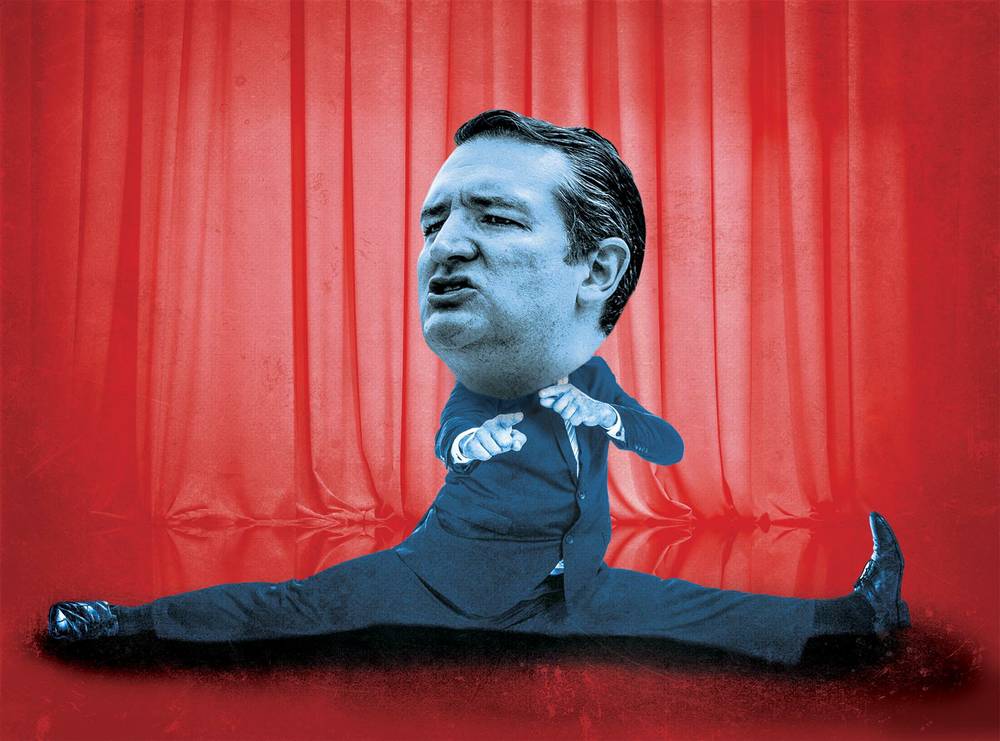There’s a woman on the floor in front of me doing the splits. We’re in a conference room at Sunset Station, and I’m on a stiff chair in the back. Other people are sprawled out on the carpeted floor, wearing leggings or sweats and listening to a super-fit strength instructor talk about learning to relax.
“You just need to know how to release muscle spasms,” she says. The bendy woman in front of/below me swings her legs back together, lies on her back and pops up into a backbend. Her upside-down face gazes up at me. I try to smile, but my eye just twitches. “Listen to your body,” says the trainer, a 58-year-old who claims she can run a 5-minute mile and do a one-handed pull-up. “Your body really has most of the answers.”
My body knows it has no business here, in a class at the International Contortion Convention. But it’s hard not to want to watch. I will soon see another upside-down woman support her entire body with her mouth, balancing on the top of a pole and using her toes to shoot an arrow at a target. (Bull’s-eye.) I’ll see another woman push a backbend so far that she slides her head and shoulders completely up under her ankles, so her feet are beside her face. It’ll make me flinch.
These are phenomenal artists and athletes, performing for amazed audiences in Las Vegas and worldwide. As considerable as their talents are, some of their contortions still make me recoil; they’re shocking and illogical in a way that makes me shudder and wonder, what’s really happening here?
* * * * *
The Council on Foreign Relations, a nonpartisan think tank, says on its website, “The presidential nominating process in the United States is one of the most complex, lengthy and expensive in the world.” The CFR then describes the complicated yet disturbingly flexible delegate process, which I’ll attempt to summarize:
At stake in each state’s contest—possibly a primary you stand in a long line for, like Arizona’s, or a caucus you stand in a long line for, like Nevada’s—is a certain number of delegates who represent their states at the national conventions. For Democrats, candidates are generally, but oddly not always, awarded delegates on a proportional basis—thus, a candidate who receives one-third of the support in a caucus gets roughly one-third of the delegates moving forward. The number of delegates states get is related to its Democratic vote in the previous three presidential elections, as well as its assigned number of Electoral College votes. I’m not making this up. But someone did. This year, the Democratic candidate must get at least 2,382 of 4,763 delegates to win, then do six backbends and shoot a bow and arrow with his or her toes.
On the Republican side, some states award delegates proportionally, some are winner-take-all and others use a hybrid system. Some do cartwheels and most balance themselves using only their mouths. The GOP gives each state 10 delegates, plus three for each congressional district and bonus delegates for states that contributed electoral votes to the party in the previous presidential election, along with those that elected Republicans to high offices. The GOP candidate this year must secure at least 1,237 of 2,472 delegates to win. And do the splits.
Furthermore, each party also reserves superdelegate slots at the national convention for its high-ranking officials, who can generally vote for whomever they want, rendering the backbends and movable ribs it took to get this far nearly moot. In the GOP, these include the three members of each state’s national committee. Among limber Democrats, superdelegates include members of the national committee, all members of Congress and governors, former presidents and VPs, former congressional leaders, and former chairs of the Democratic National Committee. Ta-da!
When I consider this twisted routine, I wish I hadn’t. I recoil. I shudder and wonder, what’s really happening here? Is this the world’s best system, a feat of amazing political art, or a dangerous illusion?
* * * * *
At the contortionists’ rehearsal, a 2-foot square blue box sits onstage. When the music starts, the top opens, and someone’s bare foot emerges. Slowly, a whole, functioning human unfolds from within. It’s disturbing yet fascinating: Elbows and knees and shoulders emerge in an unsettling, illogical sequence, until, somehow, a guileless teenage girl with two long braids stands onstage, intact. She smiles, then dives into her routine—walking on her hands, backflips, front flips, backbends. But the real show is getting in and out of that box.
So while others take their turns onstage, she keeps practicing the box maneuver: twisting and folding herself inside, closing the lid and then opening the lid and praying-mantis-ing out again. I watch intently from a distance. Each time, I’m disturbed. How can a healthy human being with so many complicated parts fit into that little space? I want to understand, but I’m also just enjoying the show. She watches me with a performer’s smile. She knows I’m befuddled, and we both know that’s the key to the act. But now that I’m here, at the convention, I have to decide whether I want to be entertained or informed. What a luxury.



